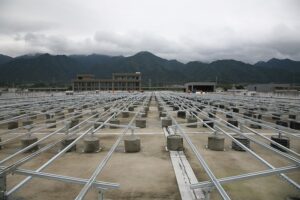
Harnessing the Power of Nature: Innovative Approaches to Clean Energy
The pressing issue of climate change and environmental degradation has placed clean energy at the forefront of global discussions. The transition from fossil fuels to sustainable energy sources is not merely an option; it is a necessity for the survival of our planet. Harnessing the power of nature encompasses various innovative approaches to clean energy that can drive us towards a more sustainable future. This article explores the myriad ways in which nature can be harnessed for clean energy solutions, focusing on their potentials, challenges, and future implications.
The Significance of Clean Energy
As the world grapples with the devastating impacts of climate change, the significance of clean energy becomes increasingly evident. Clean energy refers to renewable sources of energy that produce little to no pollution, contributing to a reduction in greenhouse gas emissions. This includes solar, wind, hydro, and geothermal energy, among others. The transition to clean energy is vital to reduce our dependence on fossil fuels and mitigate environmental impacts.
Understanding Renewable Energy Sources
Renewable energy sources are derived from natural processes that are replenished at a faster rate than they are consumed. These sources are abundant and provide safer, cleaner alternatives to traditional energy forms. Below are some key renewable energy sources:
Solar Energy
Solar energy is one of the most promising renewable energy sources. It harnesses the sun’s power through photovoltaic cells, converting sunlight directly into electricity. The technology behind solar panels has seen significant advancements, making them more efficient and affordable. Additionally, solar power can be utilized on various scales, from residential rooftops to large solar farms.
Wind Energy
Wind energy captures the kinetic energy of wind through turbines, converting it into mechanical power. Offshore and onshore wind farms have become increasingly common, generating substantial amounts of electricity. Wind energy is one of the fastest-growing renewable energy sectors worldwide, showcasing its potential to meet energy demands sustainably.
Hydropower
Hydropower utilizes the energy of flowing water to generate electricity. This can be achieved through large-scale dams or small run-of-the-river projects. Although hydropower is a well-established energy source, it needs to be managed sustainably to minimize ecological impacts on aquatic ecosystems.
Geothermal Energy
Geothermal energy harnesses heat from beneath the Earth’s surface. This can be used for electricity generation or direct heating applications. Geothermal plants have a small footprint and produce minimal emissions, making them a reliable and sustainable energy source.
Innovative Approaches to Harnessing Clean Energy
Innovative approaches to harnessing clean energy are continuously evolving. We are witnessing breakthroughs that not only enhance energy efficiency but also integrate renewable sources into our daily lives. Here are several innovative methods revolutionizing clean energy production:
Solar Panel Innovations
The field of solar technology is undergoing rapid innovation. Recent advancements include the development of bifacial solar panels that capture sunlight from both sides, increasing efficiency. Additionally, perovskite solar cells, made from a more accessible and cheaper material than traditional silicon cells, have shown great potential in boosting solar energy efficiency and affordability.
Floating Solar Farms
Floating solar farms have emerged as a groundbreaking solution to land-use challenges faced by solar energy projects. By installing solar panels on bodies of water, these systems not only generate electricity but also reduce evaporation and help keep water bodies cooler. Floating solar arrays can be especially beneficial in regions with limited land space.
Vertical Wind Turbines
Vertical wind turbines are gaining traction as an alternative to conventional horizontal-axis turbines. They are designed to operate efficiently in urban environments where wind patterns can be unpredictable. These turbines are quieter, have a lower visual impact, and can be installed on rooftops, making them ideal for densely populated areas.
Biomass Energy
Biomass energy is derived from organic materials, such as plant and animal waste. This approach utilizes resources that would otherwise contribute to landfill waste. Innovative techniques, such as anaerobic digestion, convert organic waste into biogas, which can be used for heating and electricity generation. Furthermore, advances in biofuel production from algae are being explored as a sustainable alternative to gasoline.
Energy Storage Solutions
The intermittent nature of renewable energy sources like solar and wind necessitates effective energy storage solutions. Innovations in battery technologies, such as lithium-ion and solid-state batteries, have enhanced energy storage capabilities. These technologies allow for surplus energy generated during peak production times to be stored and utilized when demand is high, ensuring a steady energy supply.
Smart Grids and Energy Management Systems
Smart grids integrate digital technology with traditional power systems to improve electricity delivery and consumption. These systems enable real-time monitoring, making it easier to manage energy loads effectively. Energy management systems optimize the use of renewable energy within homes and businesses, supporting energy efficiency and sustainability goals.
Challenges in Adopting Clean Energy Solutions
Despite the promising advancements in clean energy technologies, several challenges impede their widespread adoption. Addressing these challenges is crucial for a successful transition to sustainable energy solutions.
Infrastructure and Investment
Many regions lack the necessary infrastructure to support the adoption of renewable energy technologies. Upgrading the existing grid to accommodate decentralized energy production requires significant investment. Securing funding for renewable energy projects can also be a barrier, particularly in developing economies where financial resources are limited.
Regulatory and Policy Frameworks
Effective regulatory frameworks are essential to promote clean energy investments. However, inconsistent policies and regulations can create uncertainty for investors. Governments must establish clear, long-term policies that encourage the growth of renewable energy and address the environmental impacts associated with traditional energy sources.
Public Awareness and Acceptance
Public awareness and acceptance play a critical role in the successful implementation of clean energy solutions. Misinformation, fear of change, and lack of understanding can lead to resistance against renewable energy projects. Engaging communities through educational initiatives and inclusive decision-making processes can help build public support for clean energy initiatives.
The Future of Clean Energy
The future of clean energy lies in the continued integration of innovative technologies and sustainable practices. As advancements in clean energy technologies progress, we can expect to see a more diversified energy portfolio that embraces a mix of various renewable sources. Collaborative efforts involving governments, private sectors, and communities are vital in accelerating the transition to a clean energy future.
Investment in research and development will spur further innovation, enhancing the efficiency, affordability, and scalability of renewable energy technologies. Additionally, the rising importance of energy resilience in the face of climate change will encourage the adoption of decentralized energy systems that empower communities to generate their own power sustainably.
Conclusion
Harnessing the power of nature through innovative approaches to clean energy presents a pathway toward a sustainable future. By focusing on renewable energy sources, advancing technology, overcoming challenges, and building public awareness, we can transform the energy landscape globally. The transition to clean energy is not just a technological shift; it is a collective movement towards preserving our planet and ensuring a healthier future for generations to come.



